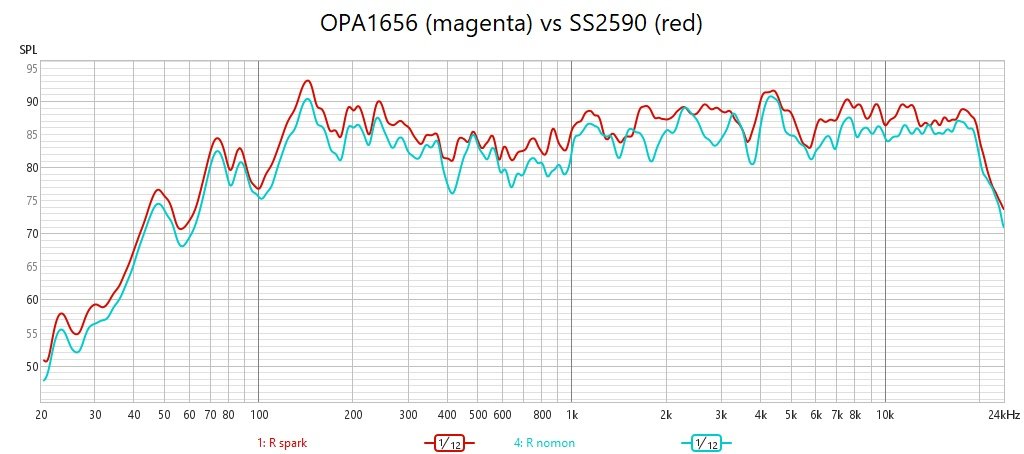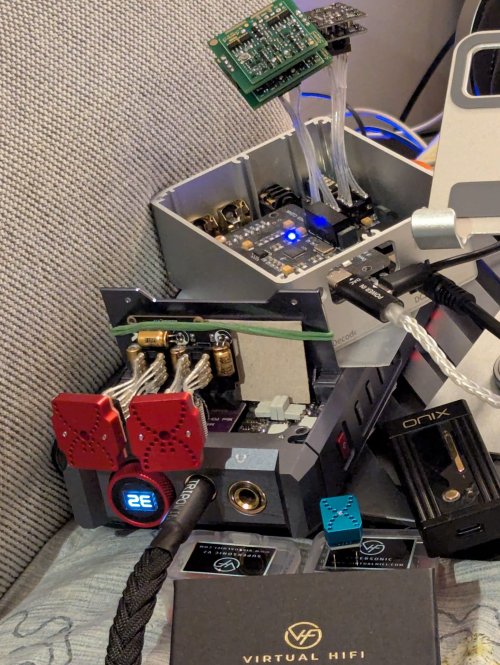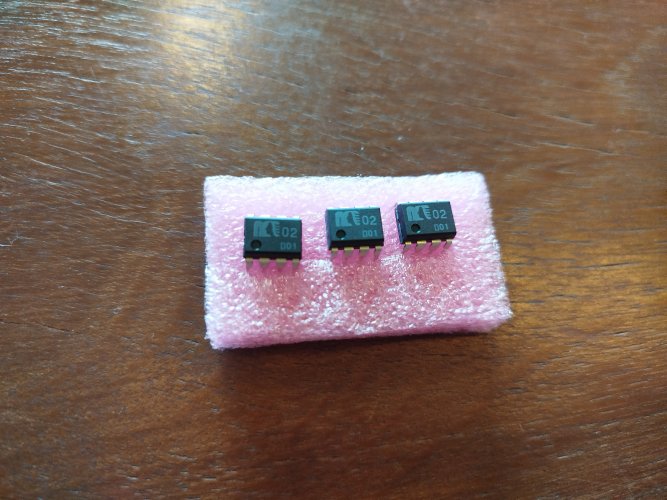pelopidas
100+ Head-Fier
- Joined
- Nov 16, 2013
- Posts
- 102
- Likes
- 58
Hey Mike!
damn it.. you are talking me into spending 300 bucks to satisfy a curiosity itch. I hope my wife does not read this thread.

If your PB2 does not benefit from the Silmics then there is absolutely no reason to use them.
When I first started playing around with the capacitors it was because some of my opamps (AD797 and some others) were prone to oscillating. I tried compensating to reduce bandwidth and that worked for the lme49990 but the 797 was being a bugger in my Xonar. Also I didn't really like the sound when compensated.
The reason I even tried putting a cap across the power pins was to help eliminate the oscillations. It worked. That is also where I learned of how profoundly it effects the sound of some opamps.
And the moral of that story is that you never know where the rabbit hole leads you.
Here is another rabbit hole. I have played with alot of film capacitors. The first place a novice audio hobbyist goes is input capacitors. You learn the signature of whatever cap is your favorite and try to improve with bypassing etc. Well, the thing that was eye-opening is that film does not sound the same in a PSU position as in DC blocking input cap position. I have even come so far as to say that film is no good in psu position.
Electrolytic all the way for PSU. Low ESR is not predictive of good sound. High ESR is not predictive of bad sound. Electrolytics are more Art than Science when it comes to sound.
But here is what I found with film caps. They squeeze the soundstage, never make it wider. I tried teflon. OMG its terrible when you bypass your PSU with that. It smears the trebble. It makes everything that is sharp sound round.
But as an input cap they are fantastic.
So that is my can of worms.. Who wants to go fishing with that? I'm not dogmatic, these are just my experiences with my equipment. I would love to hear what others think.
The easiest test is to put the largest value film cap you have on a dip adapter and put your opamp in there and listen.
damn it.. you are talking me into spending 300 bucks to satisfy a curiosity itch. I hope my wife does not read this thread.

If your PB2 does not benefit from the Silmics then there is absolutely no reason to use them.
When I first started playing around with the capacitors it was because some of my opamps (AD797 and some others) were prone to oscillating. I tried compensating to reduce bandwidth and that worked for the lme49990 but the 797 was being a bugger in my Xonar. Also I didn't really like the sound when compensated.
The reason I even tried putting a cap across the power pins was to help eliminate the oscillations. It worked. That is also where I learned of how profoundly it effects the sound of some opamps.
And the moral of that story is that you never know where the rabbit hole leads you.
Here is another rabbit hole. I have played with alot of film capacitors. The first place a novice audio hobbyist goes is input capacitors. You learn the signature of whatever cap is your favorite and try to improve with bypassing etc. Well, the thing that was eye-opening is that film does not sound the same in a PSU position as in DC blocking input cap position. I have even come so far as to say that film is no good in psu position.
Electrolytic all the way for PSU. Low ESR is not predictive of good sound. High ESR is not predictive of bad sound. Electrolytics are more Art than Science when it comes to sound.
But here is what I found with film caps. They squeeze the soundstage, never make it wider. I tried teflon. OMG its terrible when you bypass your PSU with that. It smears the trebble. It makes everything that is sharp sound round.
But as an input cap they are fantastic.
So that is my can of worms.. Who wants to go fishing with that? I'm not dogmatic, these are just my experiences with my equipment. I would love to hear what others think.
The easiest test is to put the largest value film cap you have on a dip adapter and put your opamp in there and listen.


























